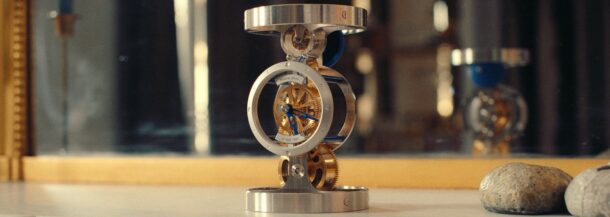Questions
Summary
What if I don’t make it to one of the assembly steps?
What if I lose or break a component?
What are the steps I will take?
Where are the watch components produced?
I’m not meticulous, is it for me?
I don’t know anything about watchmaking, is it for me?
Can the striking mechanism be added to the passage of the hours after assembly?
Is it possible to disassemble the Perseus clock?
How do you go from horizontal to vertical and back again?
How often should I manage the maintenance of the clock?
Will there be videos to help with the assembly?
What if I don’t make it to one of the assembly steps?
Watchmaking teachers have brought the educational dimension to our boxes.
These teachers also allowed us, thanks to their experience of the difficulties experienced by their students, to develop our movement by bypassing certain hard points of the assembly.
This guarantees enthusiasts, with no skills required, full success in the creation of their own timepiece!
In particular, we have developed screwdriver bits with a lower hardness than professional watch screwdrivers in order to reduce the potential risk of scratches…
Whether you are neither a manual nor a fine watchmaking connoisseur, the assembly of your clock is suitable for you.
However, it will require a certain concentration.
A book will accompany you during all the stages of assembly.
Rest assured, we will of course remain at your disposal for any questions.
What if I lose or break a component?
We have stock available to send you the lost or broken component so that you can continue with the assembly.
Stripes, on the other hand, are part of the learning process.
The bits of the screwdrivers have been developed especially for Maison Alcée.
Made of beryllium copper, their hardness is less than for a conventional screwdriver, which will reduce the risk of scratches.
What are the steps I will take?
You will assemble 169 components, only the regulating organ is pre-assembled.
You will use the tweezers, screw and oil the components, and check the assembly with the watchmaker’s magnifying glass.
In the end, you will put yourself in the shoes of the watchmaker for about ten hours to assemble your own timepiece signed with your name.
Where are the watch components produced?
More than 90% of the value of our timepiece is manufactured in France, a choice that was close to our hearts!
The regulator is manufactured in Switzerland.
I’m not meticulous, is it for me?
The clock you are going to assemble has a movement similar to that of a wristwatch but measures 10 x 16 cm.
This watchmaking object therefore makes it possible to understand the movement of a watch by removing the complexity linked to its meticulousness. The assembly will require some concentration and maybe more time, but we guarantee that you will get there.
I don’t know anything about watchmaking, is it for me?
Yes!
This watchmaking box has been developed to allow an enthusiast to discover some of the watchmaking know-how.
Designed as a practical and theoretical learning experience, the assembly of your timepiece will allow you to discover the workings of this mysterious universe.
The watchmaking teachers have also made it possible, thanks to their experience of the difficulties experienced by their students, to develop our movement by bypassing certain hard points of the assembly.
This guarantees enthusiasts, with no skills required, full success in the creation of their own timepiece!
Can the striking mechanism be added to the passage of the hours after assembly?
The striking at the passage of the hours assembles at the end of the assembly of your timepiece.
So you can add it at any time.
Future complications will be offered to you in a few months…
Is it possible to disassemble the Perseus clock?
It is possible to disassemble the Persée clock to deepen the learning of watchmaking know-how, carry out maintenance on it or add future complications.
The disarming of the mainspring is a mandatory step before any disassembly, and will be explained in the book (page 101).
It will then be sufficient to proceed in reverse with the editing sequences.
How do you go from horizontal to vertical and back again?
The Persée clock has been designed to be positioned in both horizontal and vertical positions.
To change its exposure position, you will just have to go back to the last assembly sequences indicated in the book (pages 108 to 93).
How often should I manage the maintenance of the clock?
We advise you to carry out maintenance on your clock every 5 years.
We will accompany you during these steps.
It can also be sent back to us to be checked by our watchmakers.
For more information, please contact us on 09 86 27 31 39.
Will there be videos to help with the assembly?
Videos are available for the most sensitive parts of the mountain.
In addition, if you meet the need, a video call can be set up with our teams.
You will never be left alone in the face of a difficulty.


 French
French English
English